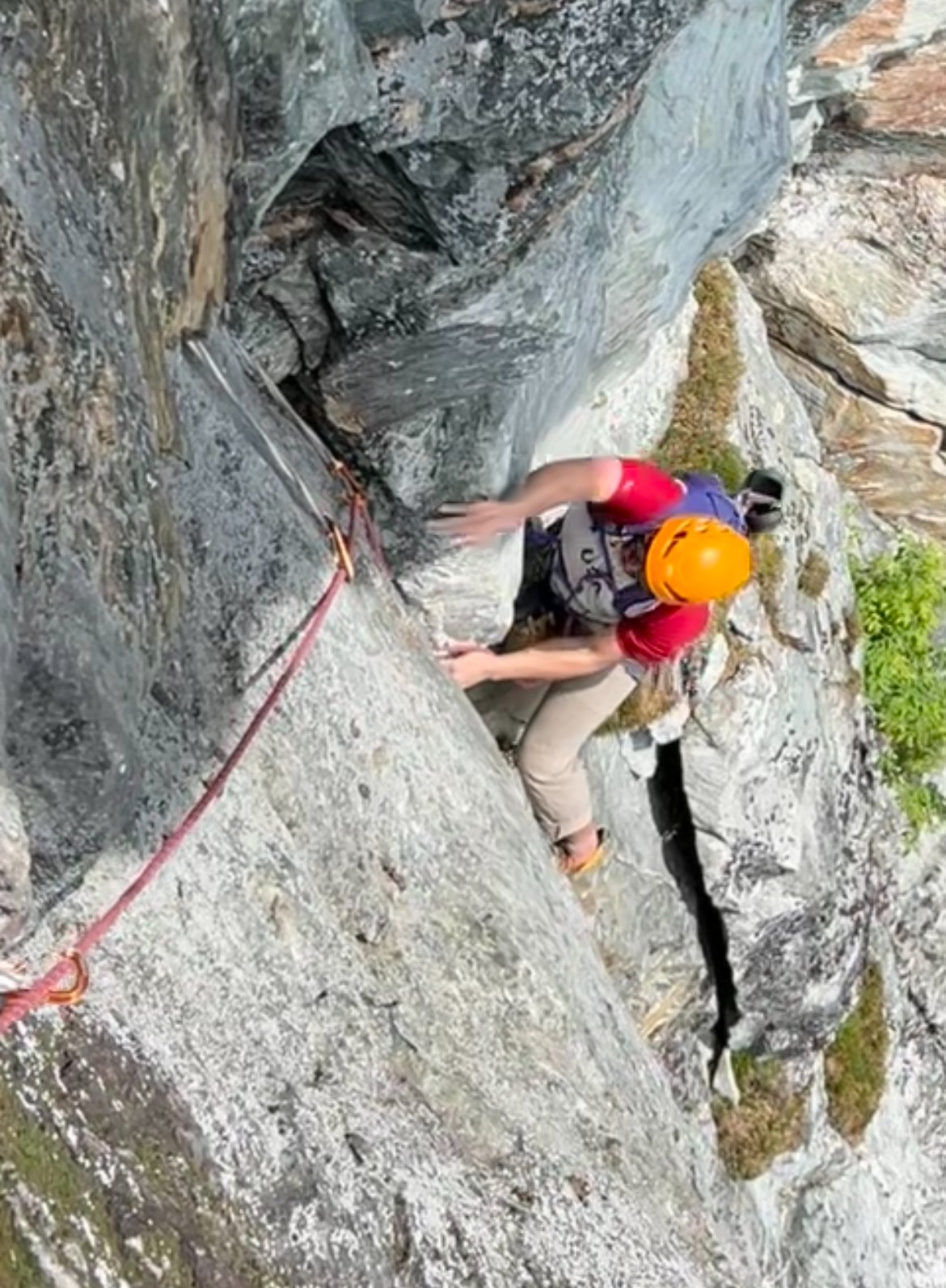Route Report: Second Stanza 5.8+ Table Rock
First climbed in July of 1968 by John Lawrence and Chuck Sproull using some direct aid, then climbed without aid in November of 1970 by Bob Mitchell, Steve Longenecker, and Roy Davis. The name comes from a book of poetry tossed from the summit and found on a ledge during the first ascent.
Second Stanza is a great adventure climb located on the Northeast aspect of Table rock. There are no fixed anchors and no bolts for protection. This route marks a committing step up for the Table Rock climber in terms of difficulty the and lack of fixed protection found on easier classics on the mountain. With the lack of fixed anchors committing to the climbing generally means committing to the summit without leaving gear behind.
Top of pitch 2.
Getting to the base can be a somewhat bushy affair, but generally you will want to find a ledge system that can be accessed by going halfway up the Lunch Ledge gully and turning right, or finding your way from the new trail just to the left of White Lightning and then going left on the ledge until you are under the pitch one flake.
The first pitch tackles a wide crack capped by a left rising flake. Memorable moves gain the top of the flake and then it’s an easy run past a few trees to a ledge. I selected to belay from a slightly higher ledge that had an obvious corner crack. The anchor that I constructed was made from a brown Camp tricam, a .75 BD cam, and a 12 stopper.
The second pitch is the obvious hanging corner. The whole pitch is around 80’ but offers engaging climbing the whole way. Trying to maintain good stems and the occasional chimney move make the going easier. I found some really quality stopper placements on this pitch, and I would avoid bringing the big gear like some folks recommend.
After the corner I lead all the way up to the third pitch crux. You can belay here, but I simply placed a 2 Camalot and then came back down to a more comfortable position to build the rest of the belay with a .5 Camalot and a red tricam.
Having the climbing rope already clipped to the high Camalot protects the belay on the next lead, and having more rope out is better for everyone if a slip happens in the crux while on lead.
The view of the third pitch.
The crux third pitch overcomes a steep bulge with bad footholds in the left wall.
Stepping up to the bulge you feel the weight of the wall above you. I like to place a solid 1 Camalot and extend it just enough to help the rope run smoothly.
The key to success is finding a key hidden side pull with the left hand. Some folks mention this feeling a 5.10a move and I would tend to agree if you don’t use the best holds available.
On top of the bulge there is a large piece of loose rock sitting on a ledge. Caution should be made to keep from pulling this off on your belayer.
A few more moves up and left gets you out of the difficulty. Once here a belayer can be made with some smaller finger sized pieces. Stopping here allows you to maintain good communication with your second through the crux, and allows you to get some sweet photos of their struggles:)
Just above the crux bulge.
The traditional fourth pitch goes up and left and joins in to the last pitch of My Route.
On this day we chose to down-lead to the bolted anchor to the first pitch of My Route. This was accomplished by allowing my guest to go first and placing ample protection. Down climbing this way was probably 5.6 in difficulty. Once my guest reached the bolted anchor they were able to pull all the rope through the protection and put me on belay. From here we rappelled to the Lunch Ledge.
The rope we used for the day was a 70 meter cord and that made descent and the rest of the day easier. If you had a 60 meter rope that would also work for all of the methods described and pitch lengths.
I was able to get by with a single rack including micro cams and stoppers and Tricams. I would be sure to have a 3 Camalot for the first pitch and maybe even a 4 if you really want to sew it up.
Second Stanza is a quality route that was an early effort by the local climbers and still offers an exciting ascent for the modern Table Rock climber. The route is committing due to the lack of fixed anchors and is more akin to adventure routes found in other parts of the Linville gorge.




